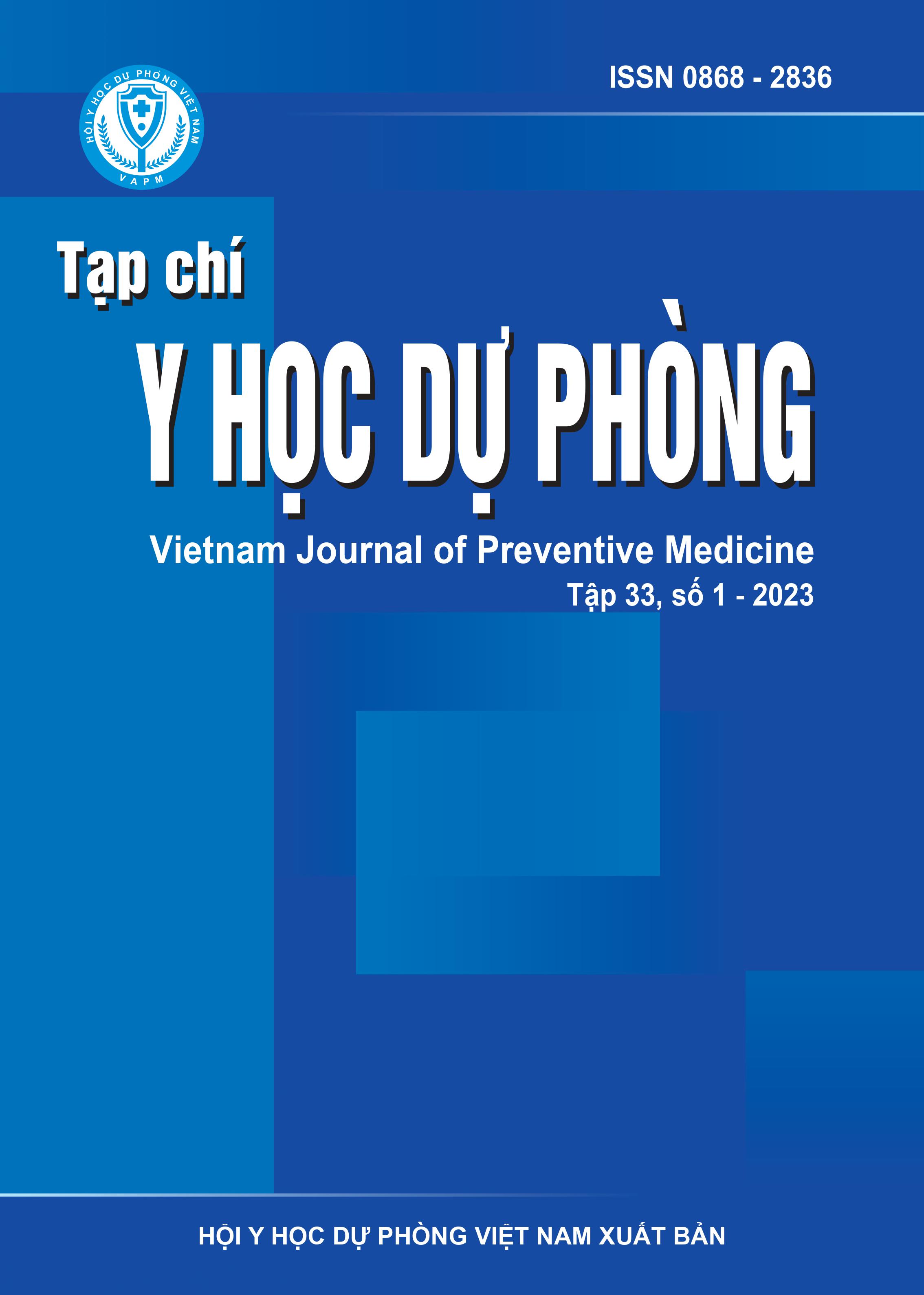Investigating characteristics of bacteria causing hospital-acquired pneumonia in Intensive Care Unit, Thai Nguyen National Hospital 2020 - 2021
DOI:
https://doi.org/10.51403/0868-2836/2023/946Keywords:
Antibiotic resistance, hospitalacquired pneumonia, Intensive Care Unit (ICU), Thai NguyenAbstract
The study used a retrospective method to determine the cause of hospital-acquired pneumonia and antibiotic resistance of bacteria isolated at the Intensive Care Unit of Thai Nguyen national Hospital, 2020 - 2021. Results: Of the 467 samples, 30.5% (145/467) samples isolated the causative agent, sputum 45.8% (66/145), blood 28.3% (41/145), pleural fluid 11.8% (17/145), endotracheal fluid 6.3% (9/145). Bacteria isolated: P. aeruginosa 22.1% (32/145), K. pneumoniae 19.3% (28/145), A. baumannii 17.9% (26/145), E. coli 15,2% (22/145), and S. aureus 9.7% (14/145) The level of antibiotic resistance of bacteria: Acinetobacter baumannii has a higher rate of tested antibiotics from 50 to 100%, not resistant to Colistin. E. coli and K.pneumoniae have a high rate of resistance to beta-lactam antibiotics (> 80%), quinolone antibiotics have a resistance rate of > 70%, Pseudomonas aeruginosa has a high rate of resistance to antibiotics: Ceftazidime, Gentamicin, Levofloxacin, Ofloxacin from 51.7 to 53.8%. S. aureus is resistant to Penicillin G antibiotic (100%), resistant to Macrolide group from 72 to 87.5%, not resistant to Vancomycin. Conclusion: The causes of hospital-acquired pneumonia: P. aeruginosa, K. pneumoniae, A. baumannii, E. coli. Gram-positive bacteria and S. aureus. The bacteria isolated at high levels and multi-drug resistant Acinetobacter baumannii not resistant to Colistin. S. aureus is not resistant to Vancomycin.
Downloads
Downloads
Published
How to Cite
Issue
Section
License
Publication License No 150/GP-BTTTT signed on May 8, 2014;
Electronic Publication License No 322/GP-BTTTT signed on June 15, 2016.


